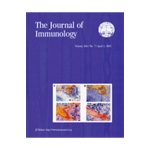Stem cell engraftment at the endosteal niche is specified by the calcium-sensing receptor.
Adams GB, Chabner KT, Alley IR, Olson DP, Szczepiorkowski ZM, Poznansky MC, Kos CH, Pollak MR, Brown EM, Scadden DT.
Abstract
During mammalian ontogeny, haematopoietic stem cells (HSCs) translocate from the fetal liver to the bone marrow, where haematopoiesis occurs throughout adulthood. Unique features of bone that contribute to a microenvironmental niche for stem cells might include the known high concentration of calcium ions at the HSC-enriched endosteal surface. Cells respond to extracellular ionic calcium concentrations through the seven-transmembrane-spanning calcium-sensing receptor (CaR), which we identified as being expressed on HSCs. Here we show that, through the CaR, the simple ionic mineral content of the niche may dictate the preferential localization of adult mammalian haematopoiesis in bone. Antenatal mice deficient in CaR had primitive haematopoietic cells in the circulation and spleen, whereas few were found in bone marrow. CaR-/- HSCs from fetal liver were normal in number, in proliferative and differentiative function, and in migration and homing to the bone marrow. Yet they were highly defective in localizing anatomically to the endosteal niche, behaviour that correlated with defective adhesion to the extracellular matrix protein, collagen I. CaR has a function in retaining HSCs in close physical proximity to the endosteal surface and the regulatory niche components associated with it.





